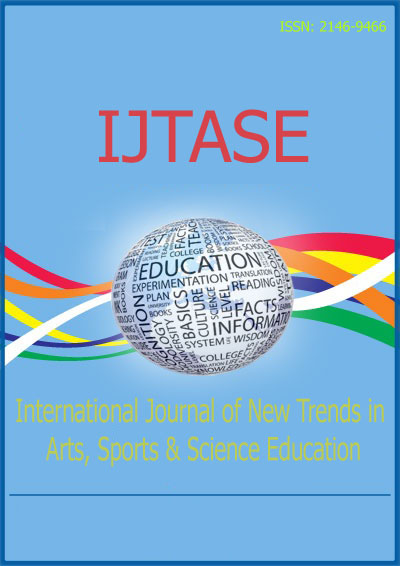
International Journal of New Trends in Arts, Sports & Science Education
Yazarlar: Saime ÇAĞLAK SARI
Konular:
Anahtar Kelimeler:Processing speed,Types of reaction (simple,Selective,Distinctive),Agility.
Özet: This is a scanning study on 42 students of ages from 10 to 11 from a primary school located in Istanbul on surveying the relationship between process speed, reaction and agility. In the study, an "Academy Reaction Timer" was used to evaluate Simple, Selective and Distinctive reaction types, "Side Direction Alter", "T" and Short “T” tests were used as agility tests, and "WJ-R COG Cognitive Ability Test" was used to evaluate process speed (Test 3: Visual Matching and Test 10: Draw Out). The data were analysed and interpreted by general distribution statistics, arithmetic mean and standard deviation and Pearson Product-Moment Correlation Coefficient test for the relationship. Significant ratio was accepted as p<0.05. While there isn’t a significant relationship between the children’s processing speed with Simple, Selective “reaction time”, “movement time” and “response time” and Distinctive “movement time” a significant relationship was found between processing speed and Distinctive “reaction time” and “response time”. While there isn’t a significant relationship between processing speed and “Side Direction Alter” and “T” agility tests; a significant relationship was found between processing speed and Short “T” agility test. While there isn’t a significant relationship between “Side Direction Alter” agility test and Simple “movement time”, Selective “reaction time” and “response time” and Distinctive “reaction time”, but a relationship between Simple “reaction time” and “response time”, Selective “movement time”, Distinctive “movement time” and “response time” was present. While there isn’t a a significant relationship between “T” agility test and any part of Simple, Distinctive reactions, Selective “reaction time” and “response time” but there was a relationship found between only in Selective “movement time”. There was no a significant relationship between Short “T” agility test and any part of the Simple reaction, Selective “reaction time”, “response time” and Distinctive “reaction time” but a significant relationship found between Selective “movement time” and Distinctive “movement time”, “response time”.